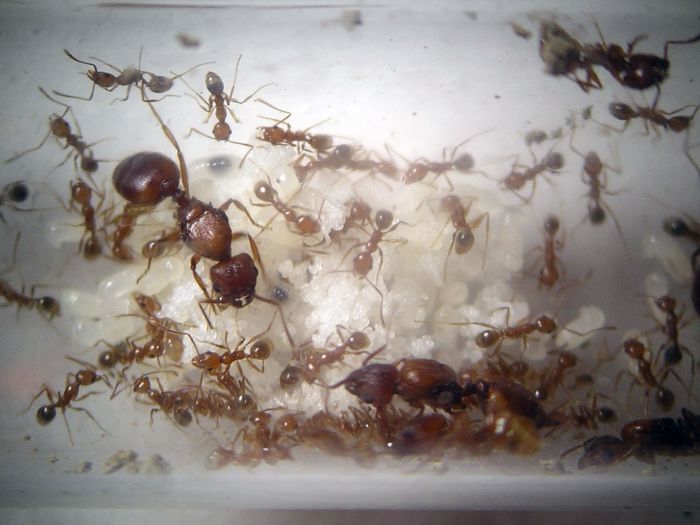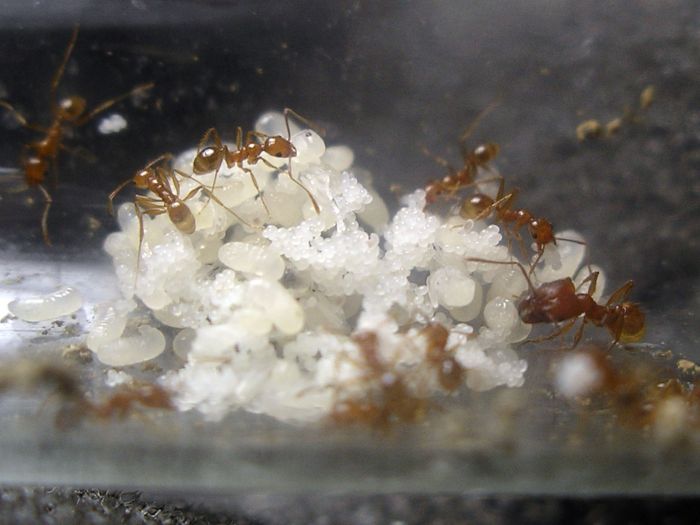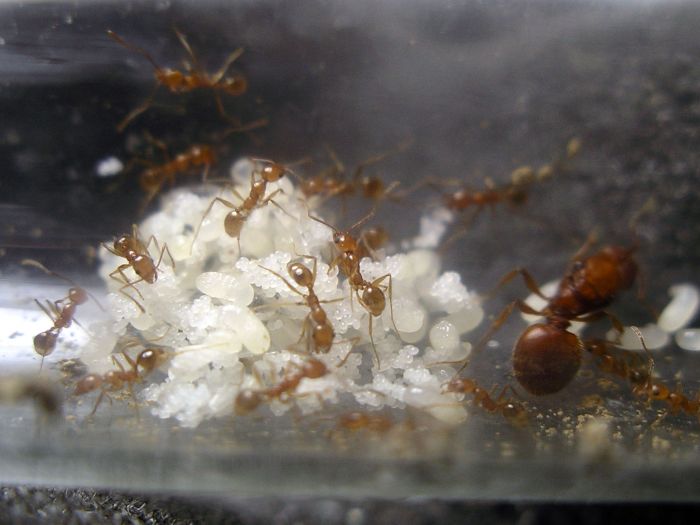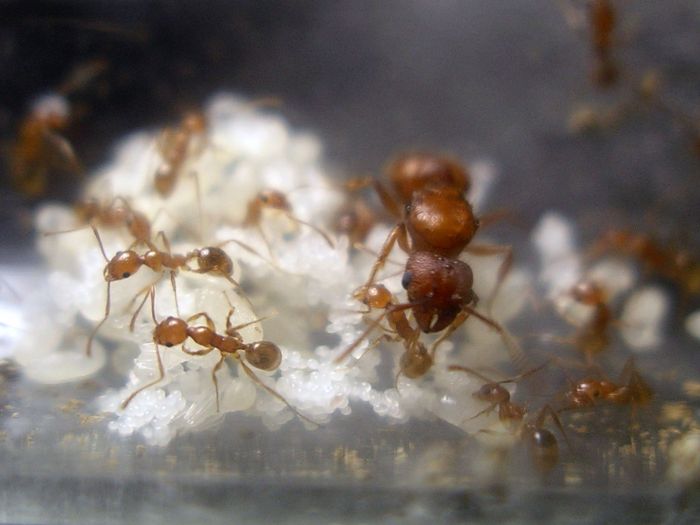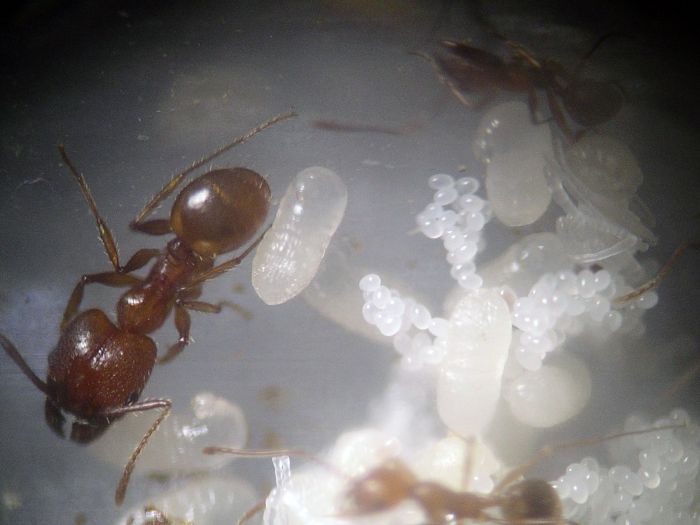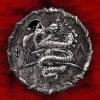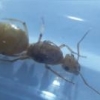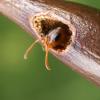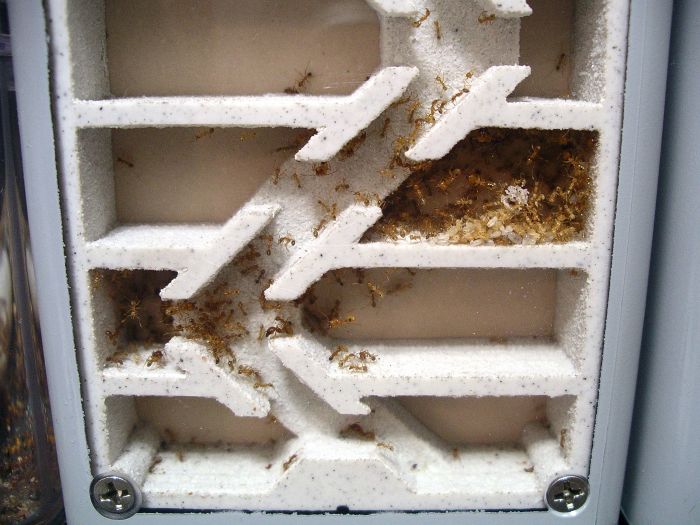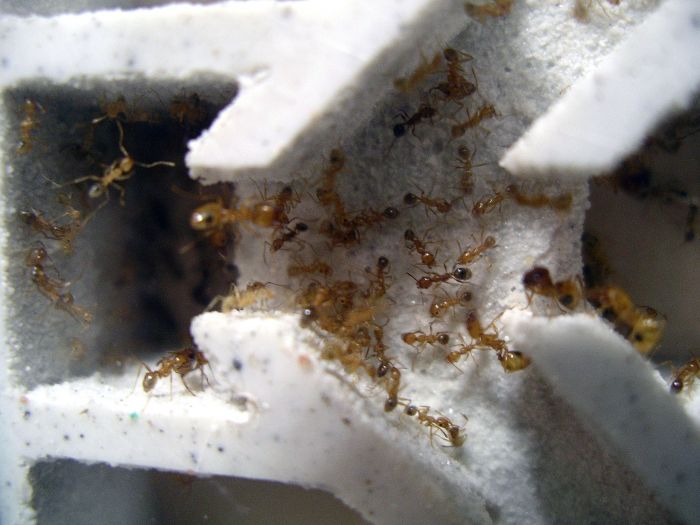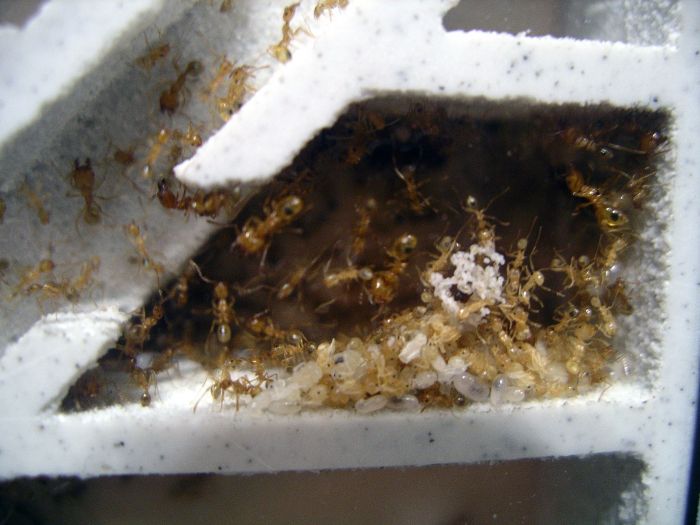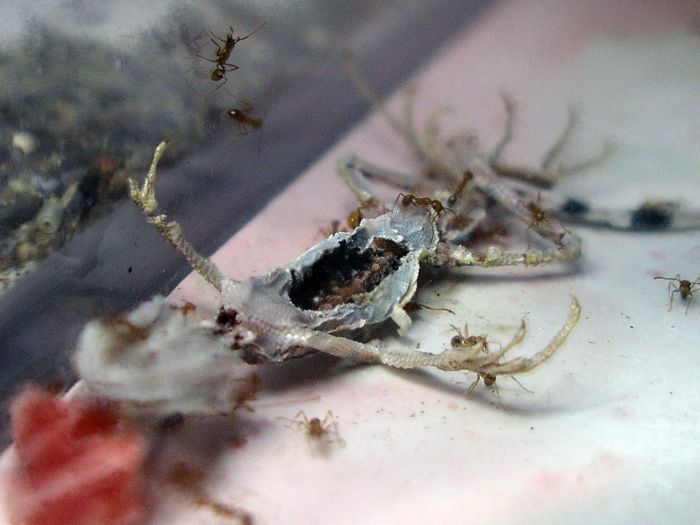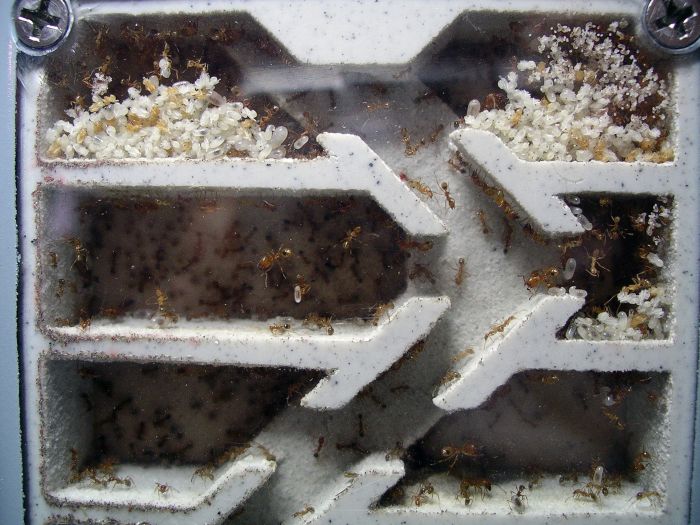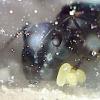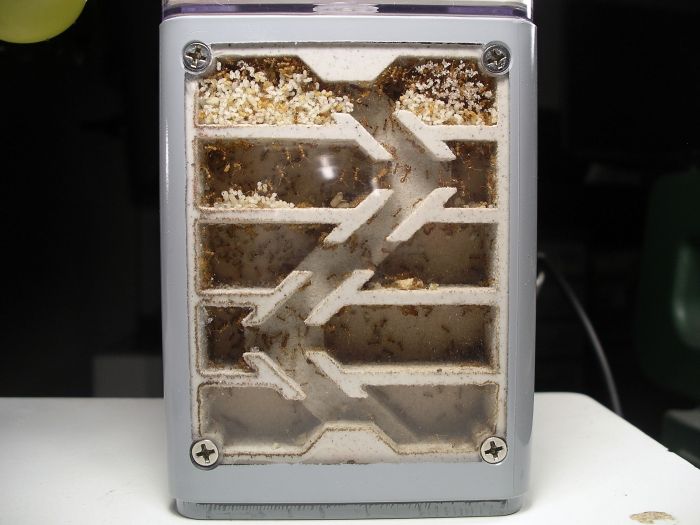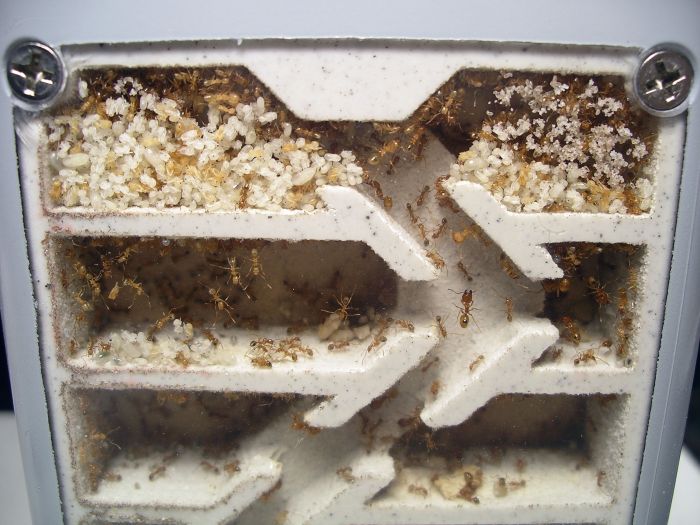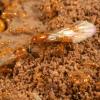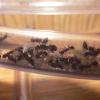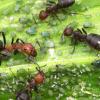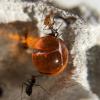I have a theory that might explain this species.
In the wild, their colonies tend to be pretty small. I think its only 1,000 ants at most on average...very small colonies. Maybe 10,000 or something.
However, in captivity they lay SO many eggs. I had one colony with around 5 queens, in a mere 2-3 months the colony had thousands of brood. Yet, in nature...they never do that.
I have a suspicion that, when brought to an "artificial" habitat they become invasive in a way. Take Tapinoma sessile, a perfect example of this. In their native non-urban habitat...very very small colonies. In an urban area, they grow up to 10 million ants in a huge supercolony.
Which, goes back to Pheidole hyatti. In nature, very small colonies (I've never once seen a big one, even if there is a lot of queens). As soon as they enter an ant formicarium...population explosion of mass egg laying.
I have a suspicion Pheidole hyatti can become invasive if they were ever imported to a non-native habitat. Because, I've seen many colonies of them, and they never reach that much brood or amount of ants in that short of a time period. In fact, they tend to have only a small amount of brood until put in an ant formicarium.
I do know however, my particular colony of 5 queens...grew way faster than me 3-4 queened Solenopsis invicta colony I had. Granted, there were 1-2 extra queens...still...it was insane. Usually Solenopsis are the ones that breed fast, but my particular colony was growing way faster.
Edited by Vendayn, February 14 2015 - 11:12 PM.
